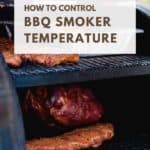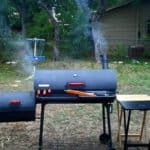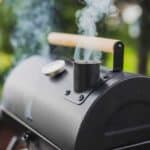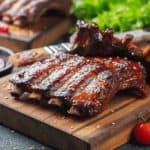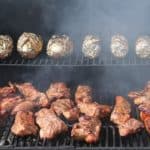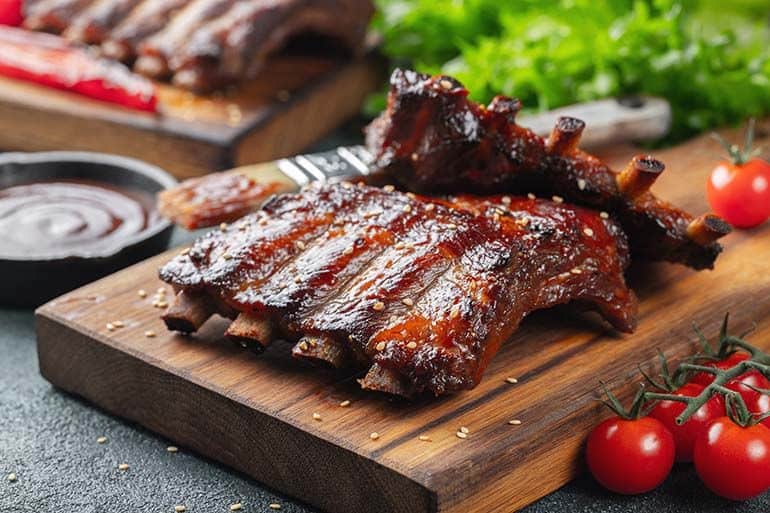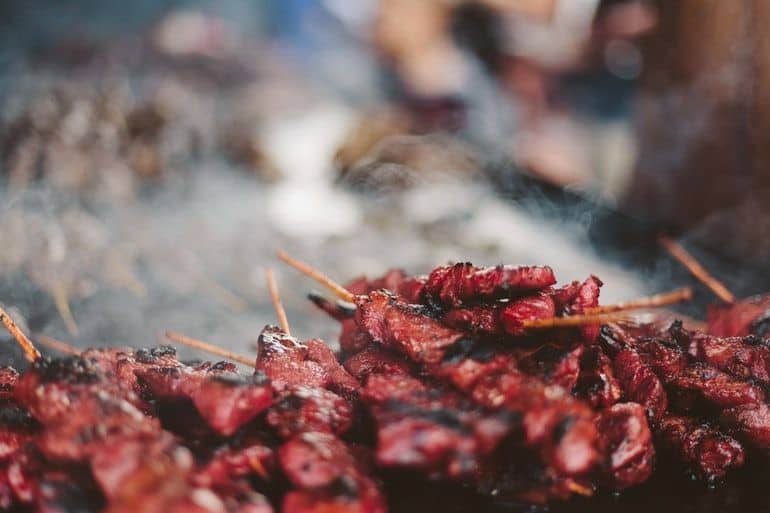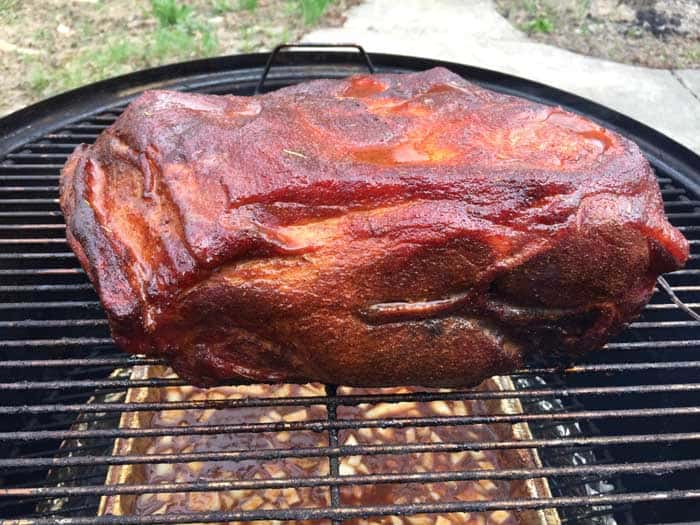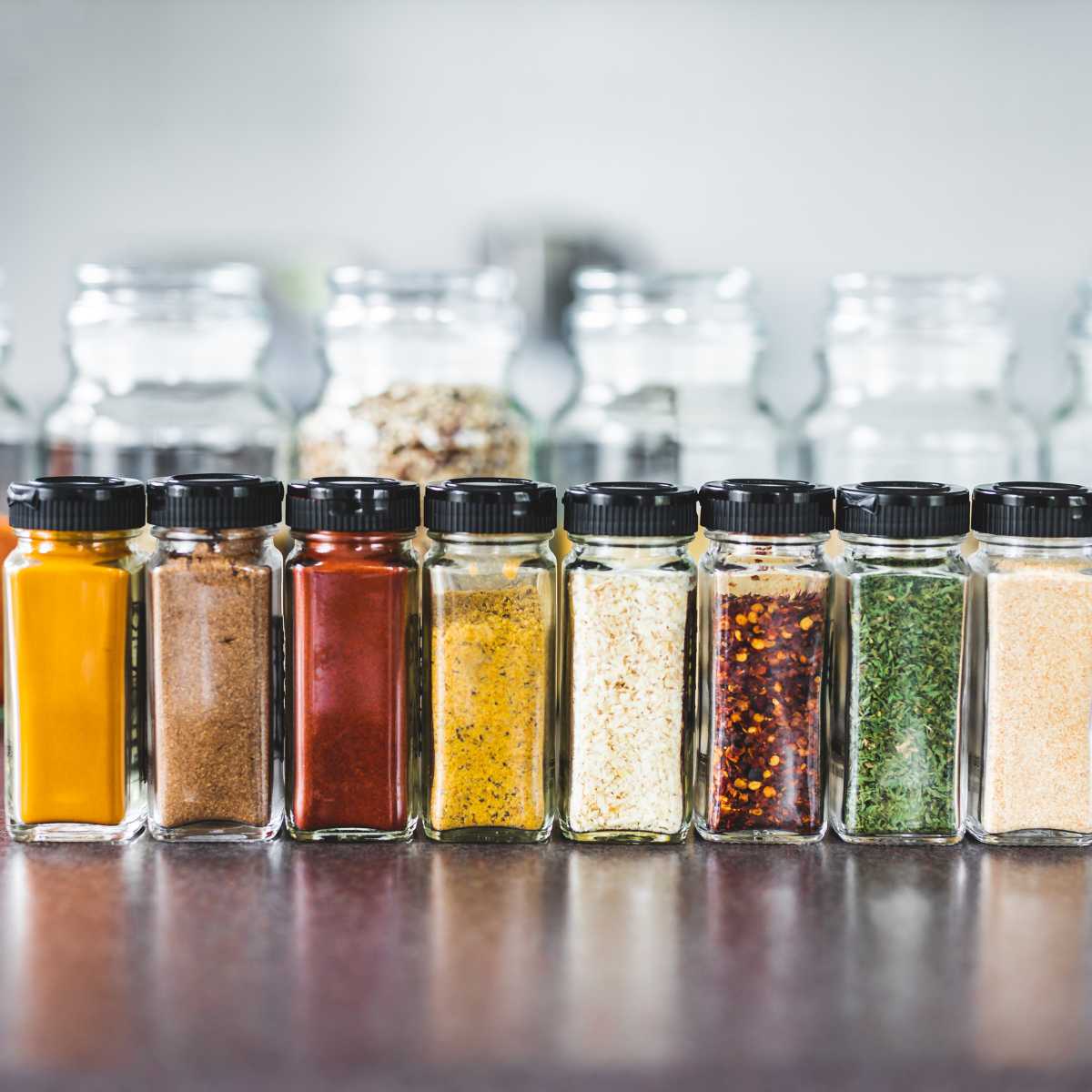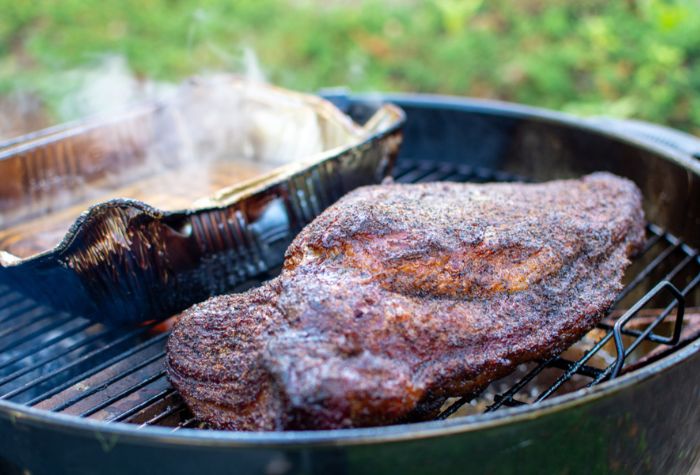When it comes to outdoor smoking, there’s nothing more important than good temperature control. Getting your choice of meat and wood chips is all part of the fun, but getting the temperature right is a whole different challenge. Here’s how to regulate the temperature of your BBQ smoker.
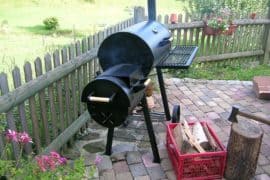
- How do smoker air vents work?
- Learn how to control your air vents
- Try a dry run
- Invest in your own air probe thermometer
- Take notes
- Aim for blue smoke
- Protect yourself from the elements
- Get a smoker temperature control system
- Regulate the heat with a water pan
- Don’t keep opening the smoker
- My smoker won’t get hot enough. What do I do?
- How do I lower the temperature in my smoker?
- How do I keep my smoker going overnight?
You might already be familiar with how difficult keeping your charcoal grill hot is. Doing the same with a smoker is just as challenging.
There’s nothing more frustrating than wasting beautiful, prime meat. Not getting your temperature levels under control is one sure fire way to do this.
Regulating temperature in your smoker is crucial to perfectly cooked food. You will need to learn how to adjust your intake and exhaust dampers to create a consistent stream of blue smoke that’s perfect for barbecue.
Fortunately, it’s not hard to learn. In my guide today I’ll show you how you can control temperatures in your smoker, and how you can use them to smoke your meat perfectly.
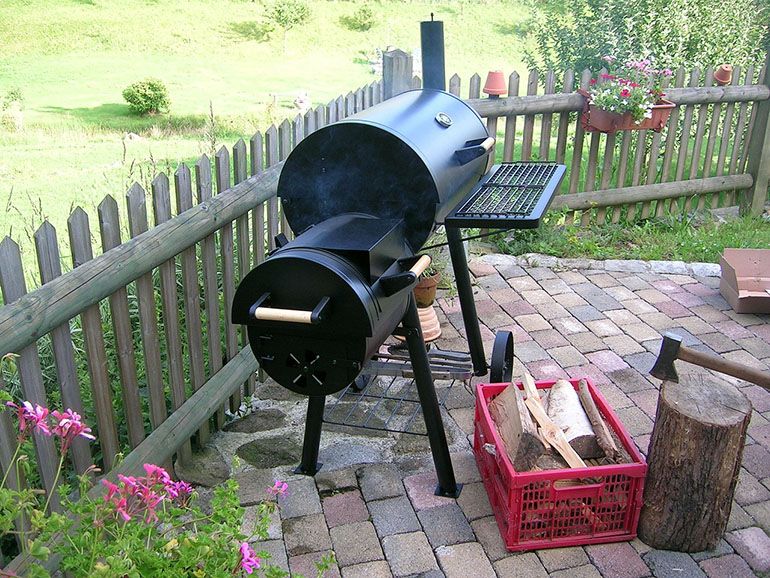
How do smoker air vents work?
As with grills, smoker air vents play a crucial role in staying on top of temperature levels. You need to be able to use them to maintain a consistent heat level at all times.
Smoking meat requires cooking food low and slow. Doing this isn’t possible if your smoker is suffering temperature fluctuations. Over the course of the 4+ hours that you are cooking for, that’s a serious amount of heat loss.
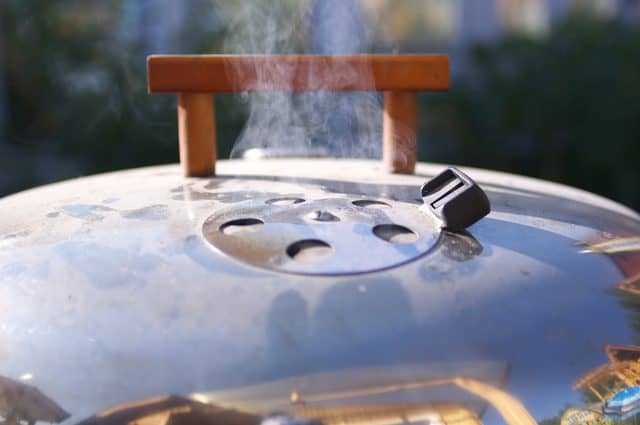
Meat smoking requires exposing meat to temperatures of around 225°F (107°C) over the course of at least 4-8 hours
Whether you’re grilling or smoking with charcoal, you have two fuel sources to stay on top of. One is the charcoal itself, and the other is the oxygen that passes through the grill.
Add more oxygen and the heat will increase.
Reduce the intake of oxygen, and the heat will diminish.
Most smokers have two sets of air vents. One set will be located near the bottom of the smoker chamber, called the intake vent, or intake damper. This is where oxygen comes into the grill.
The other set of vents is called the exhaust vent, or exhaust damper. This usually lies near the top of your grill, and helps air pass out of your smoker. As well as this, it allows smoke, gas and excess heat to exit the chamber.
Opening this damper allows gases to escape. This then creates a vacuum in the smoker, allowing more oxygen in.
Here’s the best way to think of it. The intake damper feeds the smoker, while the exhaust damper releases pressure and smoke from the chamber (source).
Learn how to control your air vents
It’s tempting to think that leaving both dampers wide open is your best way to feed your smoker. But for good temperature control you want to avoid this.
Constant streams of oxygen will keep your charcoal burning way above the 225°F that we want.
Charcoal can take a while to heat up, but once it gets going it heats up very quickly and can be difficult to bring back down. Going over your target temperature like this is called an overshoot.
it’s important to control its burn rate as much as possible, and the key to this is to adjust your vents before you reach target temperature. This will help combat overshooting.
Once your charcoal shows signs of picking up the pace when warming up, start to close your intake vent slightly. Do not close it completely.
This will take practice, but the idea is to try to time pulling back on oxygen intake so that it aligns as close to 225°F as possible. Any change you make will take a while to take effect. So, if you are too reactionary, your temperature will be all over the place.
If you feel that you need to increase the temperature, then I recommend checking your fire box first to make sure that you have enough charcoal. Do this before opening your vents back up
Try a dry run
If your smoker is new then give it a test run. A trial cook will help you get a feel for how quickly it heats up, and how it reacts to any adjustments you make to the vents.
Different smokers can react differently, so a practice run will help you get to grips with how it achieves target temperature is a great idea. You can then calibrate your smoker to help you get the most out of it on future runs.
Invest in your own air probe thermometer
By now it should be clear that getting an accurate read on the internal temperature of your smoker is crucial to good smoking. Air probe thermometers have really come a long way over the past few years, so if you don’t have one already then I strongly recommend getting one.
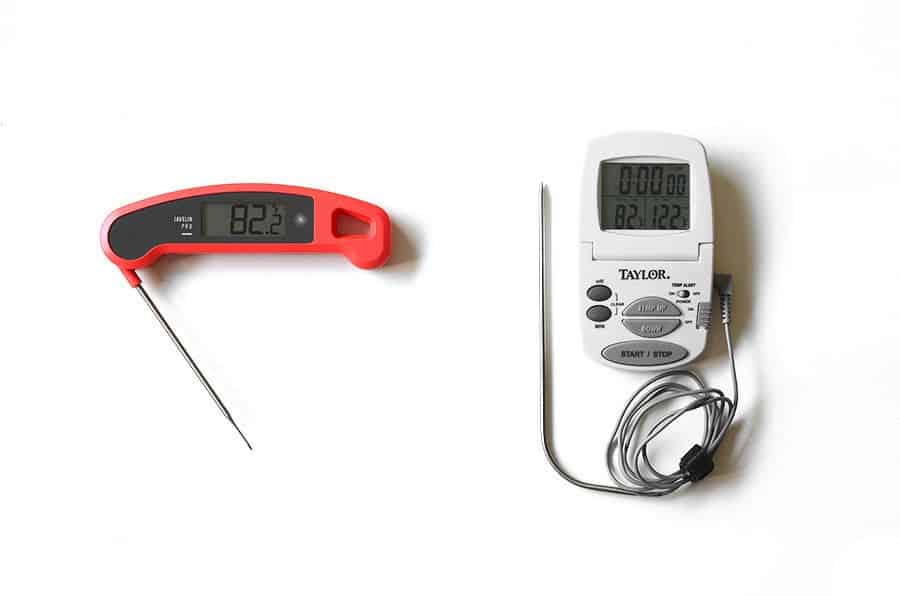
Many modern BBQ smokers do come with inbuilt thermometers, but a lot of these have been proven to be unreliable and can even read up to 50F off the mark.
I recommend getting a dedicated thermometer instead. Dual probe models are great because they offer you two readings. One for the chamber’s ambient temperature, and the other for your meat’s internal temperature.
Take notes
I know this sounds tedious and boring, but if this is your first time using your smoker, it is well worth the effort of taking notes. Pay attention to how long your smoker takes to warm up, and how it reacts to small adjustments to the vents.
Aim for blue smoke
Smoke colors can vary wildly with grilling and smoking, but with both the kind of smoke that we want to see if blue, almost translucent smoke.
Blue smoke is a sign of clean-burning wood at our target temperature, and almost guarantees a perfect smoky flavor on our food.
If you see white smoke start to bellow from your smoker, then this is often a sign that your wood isn’t burning properly. Often the cause for this is dampness, so be sure only to use dry wood.
Protect yourself from the elements
Weather can make or break your BBQ, particularly wind.
Because airflow is so important, wind can wreak havoc with your smoker. It can greatly increase the rate at which air enters your smoker, leading to a surge in internal temperature. This can as dangerous as it is infuriating.
Try to position your smoker on your patio, with your home or garage acting as a windshield. If you can’t do that, you can use a windbreaker structure positioned around the smoker.
If you are unable to do this, then just take the added wind elements as an external factor that will need to be balanced out. You might need to close your vents slightly more than you normally would just to help account for the influence of the wind.
Get a smoker temperature control system
This might seem like a lazy easy way out, but I love smoker temperature controllers. They’re a great way to help prevent the impact of flare-ups or wind on your internal temperature.
Smoker controllers work by using something called a variable speed blower. These contraptions supply the smoker with the exact amount of air that it needs to achieve a specific temperature.
It has an air probe that sits in the grill chamber near your meat, and measures the air temperature using this so that it can adjust if need be.
I would never recommend leaving everything down to a controller. But they do act as a great failsafe in helping to soften the impact of any sudden changes in airflow.
The best controllers also come with graphs and data sets that will help you get even more familiar with how your smoker reacts to vent adjustments.
Regulate the heat with a water pan
Sudden changes in temperature, as well as long exposure to heat, can dry out food. A really good way to combat these is to place a water pan inside the foot of your chamber.
Some smokers come with ready-built water pans, but if yours doesn’t then don’t worry. You can simply get a disposable fan and fill it with water. This will help stabilize the heat in your smoker while also adding a bit of humidity.
Don’t keep opening the smoker
As tempting as it might be, don’t keep peeking and checking on your food. If you open the chamber then both heat and smoke will escape the smoker, which will disrupt the cooking temperature.
Try to keep these disruptions to a minimum. For example, if you need to replace the charcoal then try to refill your water pan and turn your meat (if needed) at the same time.
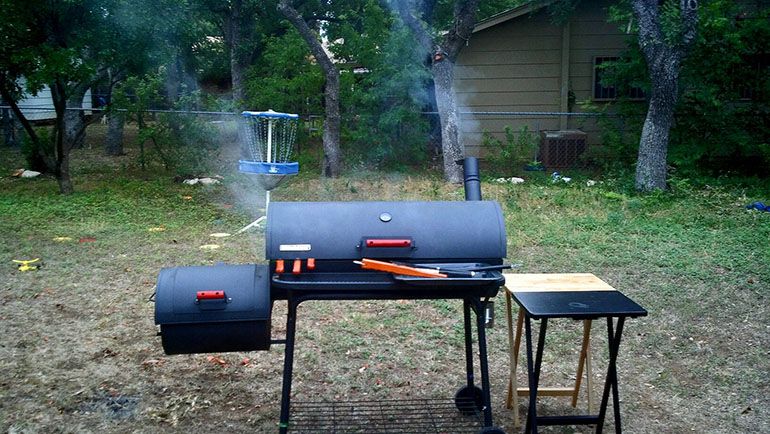
FAQ
Still struggling to get to grips with controlling your smoker’s temperatures? Here are some frequently asked questions to help you perfect the art of barbecue smoking.
My smoker won’t get hot enough. What do I do?
If both sets of dampers are wide open and you’re still struggling to get the temperature of your smoke up to 225F, then there are a few things to look out for.
Firstly, check your charcoals. If they have been burning for a while then they might simply be burning out. Replace them with fresh ones.
Next, check for leaks. Some cheaper models are less likely to be as airtight as higher end models, so any leaks will prevent your smoker from heating up at the rate we want.
Also make sure that you are using a dedicated thermometer. Most thermometers that are included with smokers are wildly inaccurate. You’re often far better off investing in your own. Make sure you get one that’s accurate and can calibrate quickly.
How do I lower the temperature in my smoker?
Instead of quickly slamming shut the vents on your grill, the key is to tweak them slowly. If you shut them quickly then you risk filling the chamber up with smoke, which could ruin your food.
Learn how to use the vents on your charcoal grill
Every few minutes, close your vents slowly. This should give you a smoother decline in temperature without suddenly exposing your meat to thick smoke.
How do I keep my smoker going overnight?
This is a tough one to answer because there are so many factors that could disrupt your smoker while you’re away from it.
Any rain and wind will cause disruption, while any unpredictable dips or surges in temperature won’t be countered by you being on hand to deal with them.
But there is a way. The key is to develop a range, which means that you need to bring your cooking temperature down in order to account for the longer cooking time. For example, where you might smoke pork butt at around 250-280°F, instead you should try to aim for around 200°F.
Check that the meat you use can handle this. Some meats can still cook well at a lower temperature, but some can’t. For example, beef brisket isn’t a good match for cooking at a lower temperature, while pork butt tends to be very flexible.
You will also have to use plenty of charcoal, enough to last for at least 8 hours. As well as this, you will need a whole log of wood instead of chips. Go for a wood like hickory or pecan, as standard oak will burn too quickly and not last the full 8 hours.
This will take practice, but as long as you stick to about your dampers being about half open, and you use a big log of wood, then you will be at least halfway there.
